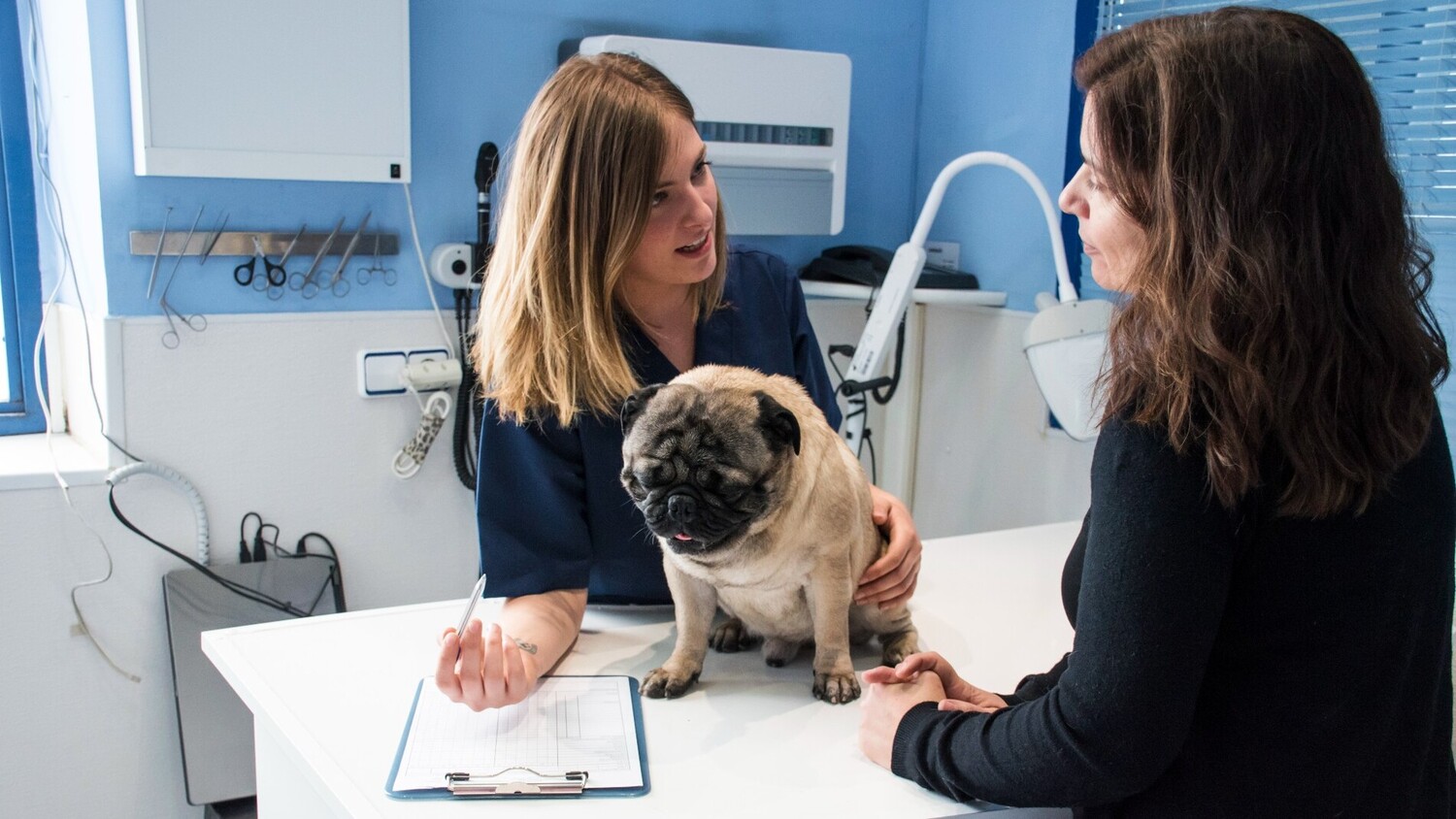Home>Health & Wellness>Common Health Issues>How To Test A Dog For Diabetes


Common Health Issues
How To Test A Dog For Diabetes
Published: January 30, 2024
Learn how to test your dog for diabetes and manage common health issues with expert tips and advice. Keep your furry friend healthy and happy!
(Many of the links in this article redirect to a specific reviewed product. Your purchase of these products through affiliate links helps to generate commission for Pawsomeoldies.com, at no extra cost. Learn more)
Table of Contents
Introduction
Diabetes is a common health issue that affects not only humans but also our beloved canine companions. Just like in humans, diabetes in dogs can lead to various health complications if left untreated. Therefore, it is crucial for dog owners to be aware of the signs and symptoms of diabetes and understand the importance of timely testing and diagnosis.
Understanding the prevalence of diabetes in dogs is essential. According to the American Kennel Club, diabetes affects approximately 1 in 300 dogs. This statistic underscores the significance of being proactive in monitoring our furry friends' health and well-being.
As responsible pet owners, it is our duty to be vigilant and attentive to any changes in our dogs' behavior, appetite, and overall health. By recognizing the signs of diabetes early on, we can take the necessary steps to ensure our dogs receive the care and attention they need.
In this article, we will delve into the signs and symptoms of diabetes in dogs, explore the various testing methods available, and provide insights into home testing kits for dogs. Additionally, we will outline the steps for testing your dog for diabetes at home, empowering you to take an active role in your pet's healthcare.
By gaining a deeper understanding of diabetes in dogs and the testing procedures involved, you will be better equipped to monitor your dog's health and well-being. Remember, early detection and intervention are key in managing diabetes in dogs, and your proactive approach can make a significant difference in your furry friend's quality of life.
Read more: How Much Is A Dog Eye Test At A Vet?
Signs and Symptoms of Diabetes in Dogs
Diabetes in dogs, similar to humans, can manifest through various signs and symptoms. Recognizing these indicators is crucial for early detection and prompt intervention. Here are the common signs and symptoms of diabetes in dogs:
-
Excessive Thirst and Urination: One of the primary signs of diabetes in dogs is increased thirst (polydipsia) and urination (polyuria). If you notice your dog drinking more water than usual and needing to urinate frequently, it could be a red flag for diabetes.
-
Weight Loss: Unexplained weight loss despite a consistent or increased appetite can be indicative of diabetes in dogs. This occurs because the body is unable to utilize glucose properly, leading to the breakdown of fat and muscle for energy.
-
Increased Hunger: Dogs with diabetes may experience an increase in appetite (polyphagia) while still losing weight. This is due to the body's inability to effectively utilize glucose, causing a constant feeling of hunger.
-
Lethargy and Weakness: If your dog appears unusually lethargic, weak, or lacking in energy, it could be a symptom of diabetes. The inability of cells to receive adequate glucose can lead to a lack of energy and overall weakness.
-
Cloudy Eyes: Diabetes can lead to the formation of cataracts in dogs, resulting in cloudy or opaque eyes. If you notice a change in your dog's eye clarity, it is essential to have them evaluated by a veterinarian.
-
Recurrent Infections: Dogs with diabetes are more susceptible to urinary tract infections, skin infections, and other recurrent infections. If your dog experiences frequent infections, it may be a sign of an underlying health issue such as diabetes.
-
Change in Gait: Diabetes can cause nerve damage in dogs, leading to a change in their gait or walking pattern. If you observe your dog having difficulty walking or an altered gait, it is important to seek veterinary attention.
Recognizing these signs and symptoms is the first step in identifying potential diabetes in dogs. If you observe any of these indicators in your furry companion, it is crucial to consult a veterinarian for a thorough evaluation and appropriate testing. Early detection and management of diabetes can significantly improve the quality of life for dogs, ensuring they receive the care and attention they need to thrive.
Testing Methods for Diabetes in Dogs
When it comes to diagnosing diabetes in dogs, veterinarians employ various testing methods to accurately assess the presence of the condition. These methods are instrumental in confirming a diagnosis and determining the most appropriate course of treatment for affected dogs.
Blood Glucose Testing
One of the primary testing methods for diabetes in dogs involves measuring their blood glucose levels. This is typically done through a simple blood test, which can be performed in a veterinary clinic. The blood sample is analyzed to determine the concentration of glucose present, providing valuable insights into the dog's metabolic status.
Urinalysis
Urinalysis is another essential testing method used to diagnose diabetes in dogs. By analyzing the dog's urine, veterinarians can detect the presence of glucose and ketones, which are indicative of diabetes. Additionally, urinalysis can reveal potential urinary tract infections, a common complication associated with diabetes in dogs.
Read more: What Is Blood Parasite Test For Dogs
Fructosamine Testing
Fructosamine testing is a valuable tool for assessing a dog's average blood glucose levels over a two to three week period. This test measures the concentration of fructosamine in the blood, providing a broader perspective of the dog's glucose control. It is particularly useful in monitoring diabetic dogs and evaluating the effectiveness of their treatment regimen.
Glycosylated Hemoglobin (HbA1c) Testing
Similar to fructosamine testing, HbA1c testing offers insights into a dog's long-term blood glucose control. This test measures the percentage of hemoglobin that is glycated, reflecting the average blood glucose levels over the past two to three months. HbA1c testing is valuable in assessing the overall management of diabetes in dogs and guiding treatment adjustments.
Oral Glucose Tolerance Test (OGTT)
In some cases, veterinarians may recommend an oral glucose tolerance test to assess a dog's ability to regulate blood glucose levels. This test involves administering a specific amount of glucose orally and monitoring the dog's blood glucose response over a period of time. The results help in evaluating the dog's insulin sensitivity and identifying potential diabetes.
Continuous Glucose Monitoring (CGM)
Advancements in veterinary medicine have introduced continuous glucose monitoring for dogs, akin to the technology used in human diabetes management. CGM systems allow for the continuous measurement of a dog's interstitial glucose levels, providing real-time data to assess glucose fluctuations and patterns. This innovative approach offers valuable insights into a dog's glucose control and aids in optimizing their treatment plan.
By utilizing these testing methods, veterinarians can accurately diagnose diabetes in dogs and tailor treatment strategies to meet the individual needs of affected pets. Early detection and proactive management are essential in ensuring the well-being of dogs with diabetes, and these testing methods play a pivotal role in achieving that goal.
Read more: How Do You Test Dogs For Cancer
Home Testing Kits for Dogs
In addition to veterinary testing, home testing kits provide a convenient and proactive approach to monitoring a dog's glucose levels, especially for those diagnosed with diabetes or at a higher risk due to breed predispositions or other factors. These kits are designed to empower pet owners to regularly assess their dog's blood glucose levels in the comfort of their own homes, fostering a deeper understanding of their pet's health and aiding in the management of diabetes.
Home testing kits typically include a blood glucose meter specifically calibrated for use in dogs, along with lancets for obtaining a small blood sample and testing strips for accurate glucose measurements. These kits are readily available through veterinary clinics, online pet supply stores, and pharmacies, offering accessibility and ease of acquisition for concerned pet owners.
The process of using a home testing kit involves obtaining a small blood sample from the dog's ear or paw pad, which is then applied to a testing strip and inserted into the glucose meter for analysis. The meter provides a digital readout of the dog's blood glucose levels, allowing pet owners to monitor fluctuations and trends over time.
Regular monitoring using home testing kits enables pet owners to proactively assess their dog's response to dietary changes, exercise routines, and insulin therapy, if applicable. It also facilitates early detection of potential hypoglycemic or hyperglycemic episodes, prompting timely intervention to prevent complications.
Furthermore, home testing kits foster a closer bond between pet owners and their dogs, as the process of testing becomes a routine part of caregiving. This hands-on approach not only promotes a sense of empowerment and responsibility but also strengthens the emotional connection between dogs and their human companions.
It is important for pet owners to receive proper training and guidance from their veterinarian on the correct usage of home testing kits. Understanding the nuances of obtaining blood samples, interpreting glucose readings, and implementing appropriate actions based on the results is essential for effective home monitoring.
By incorporating home testing kits into their pet care regimen, dog owners can actively contribute to the well-being of their furry companions, ensuring that any changes in their dog's health are promptly identified and addressed. This proactive approach aligns with the overarching goal of providing optimal care for dogs with diabetes and promoting their overall health and vitality.
Steps for Testing Your Dog for Diabetes at Home
Testing your dog for diabetes at home involves a series of essential steps to ensure accurate and reliable results. By following these steps diligently, pet owners can actively participate in their dog's healthcare and contribute to the effective management of diabetes. Here's a comprehensive guide to conducting home testing for diabetes in dogs:
-
Preparation: Begin by gathering all the necessary supplies, including a blood glucose meter calibrated for canine use, lancets for obtaining a blood sample, testing strips, alcohol swabs for sterilization, and treats or rewards to comfort your dog during the process.
-
Acclimatization: Create a calm and comfortable environment for your dog to minimize stress and anxiety. Familiarize your dog with the testing supplies, allowing them to sniff and inspect the items to reduce apprehension.
-
Site Selection: Choose a suitable site for obtaining the blood sample, such as the inner flap of the ear or the paw pad. Gently massage the selected area to increase blood flow and make it easier to obtain a sample.
-
Sterilization: Prior to obtaining the blood sample, use an alcohol swab to clean the chosen site thoroughly. Ensuring a sterile environment minimizes the risk of infection and promotes a safe testing process.
-
Blood Sample Collection: Use a lancet to prick the selected site and obtain a small blood sample. Apply gentle pressure to encourage blood flow, allowing a sufficient amount to collect for testing.
-
Testing Procedure: Carefully apply the blood sample to the testing strip as per the instructions provided with the blood glucose meter. Insert the strip into the meter and wait for the results to be displayed.
-
Interpretation: Once the meter provides the blood glucose reading, record the result along with the date and time. Compare the reading to the recommended glucose levels for dogs, which typically range between 75-120 mg/dL.
-
Monitoring and Action: Regularly monitor your dog's blood glucose levels and maintain a detailed log of the readings. Share this information with your veterinarian to facilitate ongoing assessment and treatment adjustments if necessary.
-
Positive Reinforcement: Offer praise, treats, or a favorite activity to reward your dog for their cooperation during the testing process. Positive reinforcement creates a positive association with testing, making future sessions more manageable.
-
Consultation with Veterinarian: Keep an open line of communication with your veterinarian regarding the home testing results. Seek their guidance on interpreting the readings, implementing any necessary adjustments, and addressing any concerns or questions that may arise.
By following these steps, pet owners can confidently conduct home testing for diabetes in their dogs, contributing to proactive diabetes management and the overall well-being of their beloved pets. Regular testing and collaboration with a veterinarian are vital components of effective diabetes care, ensuring that dogs receive the attention and support they need to lead healthy and fulfilling lives.
When to Seek Veterinary Care
Recognizing the appropriate timing to seek veterinary care for a dog suspected of having diabetes is crucial in ensuring timely diagnosis and effective management of the condition. While home testing and monitoring play a significant role in proactive diabetes care, there are specific circumstances that warrant immediate veterinary attention. Here are the key indicators that signal the need to seek professional veterinary care for a dog with suspected or diagnosed diabetes:
Acute Symptoms:
If your dog exhibits acute symptoms such as vomiting, diarrhea, excessive lethargy, weakness, or disorientation, it is imperative to seek veterinary care promptly. These symptoms may indicate a potential diabetic crisis, such as diabetic ketoacidosis, hypoglycemia, or other complications requiring immediate medical intervention.
Uncontrolled Blood Glucose Levels:
Consistently elevated or fluctuating blood glucose levels despite adherence to prescribed treatment regimens necessitate veterinary evaluation. Uncontrolled diabetes can lead to long-term health complications and may indicate the need for treatment adjustments or alternative management strategies.
Persistent Changes in Behavior or Appetite:
Significant and persistent changes in your dog's behavior, appetite, or overall demeanor should prompt a veterinary assessment. These changes may signal underlying health issues, including diabetic complications, that require professional evaluation and intervention.
Recurrent Infections or Worsening Symptoms:
If your dog experiences recurrent urinary tract infections, skin infections, or other health issues associated with diabetes, or if existing symptoms worsen despite treatment, it is essential to consult with a veterinarian. Addressing these concerns promptly is crucial in preventing further complications and ensuring optimal diabetes management.
New-Onset Symptoms:
The emergence of new symptoms such as excessive thirst, increased urination, sudden weight loss, or changes in gait warrants veterinary attention. These new-onset symptoms may indicate evolving health issues that require thorough assessment and appropriate diagnostic measures.
Treatment Adverse Reactions:
If your dog experiences adverse reactions to prescribed medications, insulin therapy, or other treatment modalities, it is vital to seek veterinary guidance. Adverse reactions can compromise your dog's well-being and necessitate immediate intervention to address potential complications.
Routine Monitoring and Follow-Up:
Regular veterinary check-ups and follow-up appointments are essential components of diabetes management. Scheduled visits allow veterinarians to assess your dog's overall health, review blood glucose trends, and make informed adjustments to the treatment plan as needed.
By remaining vigilant and responsive to these indicators, pet owners can prioritize their dog's health and well-being, ensuring that any concerns related to diabetes are promptly addressed by veterinary professionals. Open communication with your veterinarian and proactive involvement in your dog's care are fundamental in promoting optimal health and quality of life for dogs with diabetes.
Conclusion
In conclusion, the proactive management of diabetes in dogs is paramount in safeguarding their health and well-being. By recognizing the signs and symptoms of diabetes, understanding the testing methods available, and embracing home testing kits, pet owners can play a pivotal role in the early detection and effective management of diabetes in their furry companions.
The signs and symptoms of diabetes in dogs, including excessive thirst, weight loss, increased hunger, lethargy, cloudy eyes, recurrent infections, and changes in gait, serve as crucial indicators for pet owners to remain vigilant. Recognizing these signs early on empowers pet owners to seek timely veterinary care and initiate the necessary testing procedures to confirm a diagnosis.
Veterinary testing methods, such as blood glucose testing, urinalysis, fructosamine testing, HbA1c testing, oral glucose tolerance testing, and continuous glucose monitoring, provide invaluable insights into a dog's metabolic status and glucose control. These methods enable veterinarians to accurately diagnose diabetes and tailor treatment plans to meet the individual needs of affected dogs.
Furthermore, the integration of home testing kits into the pet care regimen offers a proactive approach to monitoring a dog's blood glucose levels. Through regular testing and collaboration with veterinarians, pet owners can actively contribute to the well-being of their furry companions, ensuring that any changes in their dog's health are promptly identified and addressed.
It is essential for pet owners to remain attentive to the indicators that necessitate veterinary care, such as acute symptoms, uncontrolled blood glucose levels, persistent changes in behavior or appetite, recurrent infections, new-onset symptoms, and adverse treatment reactions. Seeking timely veterinary attention and maintaining open communication with veterinarians are fundamental in promoting optimal health and quality of life for dogs with diabetes.
By embracing a proactive and collaborative approach to diabetes management, pet owners can make a meaningful difference in their dog's health and vitality. Through early detection, diligent monitoring, and informed decision-making, dogs with diabetes can lead fulfilling lives, supported by the unwavering care and dedication of their human companions.











